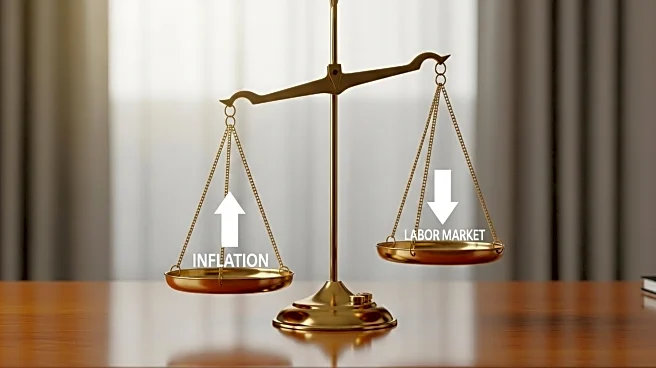What is the story about?
What's Happening?
The recent U.S. labor market slowdown has prompted a significant shift in Federal Reserve policy expectations, creating favorable conditions for Bitcoin. The August 2025 nonfarm payrolls report revealed a dramatic slowdown, with only 22,000 jobs added compared to the forecasted 75,000, pushing the unemployment rate to 4.3%, the highest since 2021. This data, along with consecutive months of manufacturing job losses and downward revisions to previous months' gains, has led the Fed to adopt a more dovish stance. Markets are now anticipating a 25-basis-point rate cut in September, with further cuts expected by the end of the year. Historically, Bitcoin has thrived in low-rate environments, benefiting from increased liquidity in risk-on assets. The weaker-than-expected July jobs report initially triggered a sell-off, but Bitcoin quickly rebounded, highlighting its role as both a speculative asset and a hedge against equity volatility.
Why It's Important?
The Federal Reserve's shift from focusing on inflation to prioritizing employment has directly impacted Bitcoin's price dynamics. This change in policy is significant as it suggests a broader economic slowdown, driving investors to reprice risk. The 2-year Treasury yield has already dropped from 3.94% to 3.69%, indicating market adjustments. Bitcoin's dual role as a speculative asset and a macro hedge underscores its evolving utility in the financial landscape. The Fed's dovish pivot, combined with Bitcoin's derivative market positioning, presents a strategic upside for the cryptocurrency. If the anticipated rate cut occurs, Bitcoin could experience a short-term rally, potentially reaching $120K, driven by a shift to risk-on assets and a reevaluation of crypto's macroeconomic beta.
What's Next?
The potential September rate cut could lead to a short-term rally for Bitcoin, driven by increased investor confidence in risk-on assets. However, the path forward is not without risks. September's historical bearish seasonality and the Fed's possible reluctance to cut rates aggressively due to lingering inflation concerns could limit Bitcoin's gains. Investors will need to balance exposure with hedging strategies, leveraging the Fed's policy shift while mitigating the risks associated with market volatility.
Beyond the Headlines
Bitcoin's strategic upside is further supported by developments in institutional-grade infrastructure, such as Ethereum staking ETF approvals and growing corporate Bitcoin holdings. These factors contribute to a structurally stronger upside for Bitcoin, despite potential market volatility. The interplay between derivative positioning and macroeconomic data suggests that Bitcoin's potential for growth is more robust than its downside risks.
AI Generated Content
Do you find this article useful?














